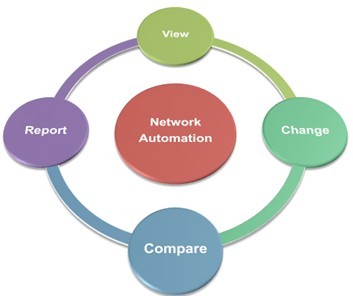Network Automation
Our understanding of network automation
In 1946, D.S. Harder, mechanical engineer of the US Ford Motor Company, initiated the word “automation”. Since then, automation has become more and more extensively utilized in the industrial, agricultural, scientific research and service sectors. Automation conveys the messages of “automatic” + “matching”, i.e. matching and associating multiple dividable issues so as to achieve the goal in a continuous manner.
The routine conducts of network operation and maintenance personnel can be divided into check, modification, comparison and report analysis. Different types of activities are correlated to a certain extent. The results of an activity may be the input or actuation condition of the next activity. Details of tasks may be established for different types of activities and the general mission can be formulated, planned and deployed through corresponding management procedures.

Product solutions:
Xinhua Times adopts NAT (network automation tools) products to provide clients with routine network operation and maintenance automation solutions. Meanwhile, the “configuration management database” provides real-time valid online operating data.
With the continuous development and expansion of networks, more and more enterprises have adopted heterogeneous network architecture. There may be equipment models from several tens of manufacturers. The administration software of various manufacturers on the network element layer can no longer satisfy user’s requirements on uniform administration of all equipment.
Network automation tools offer an automation management solution for the heterogeneous network environments of most domestic enterprises. NAT is capable of the complicated equipment management that can barely be achieved manually or through a system of rules. It can substantially enhance the reliability and security of network operations based on standard and intensive operations. It can record the configuration changes through real-time tracing, checking, saving and comparison of the configuration data of each unit of network equipment in an enterprise, hence providing valid references for subsequent auditing and troubleshooting. NAT can be used as an integration platform of network operation and maintenance tools. It can integrate the script tools that the client frequently uses in routine operation and maintenance into a uniform platform and gradually standardize the operation and development interfaces of tools. It is capable of configuration checks based on security strategies so as to guarantee that the configurations of all equipment conform to the enterprise’s IT conforming management requirements.
©Guangzhou Xinhua Times Data Systems Co., Ltd. 粤 ICP 备 09119233号-1





